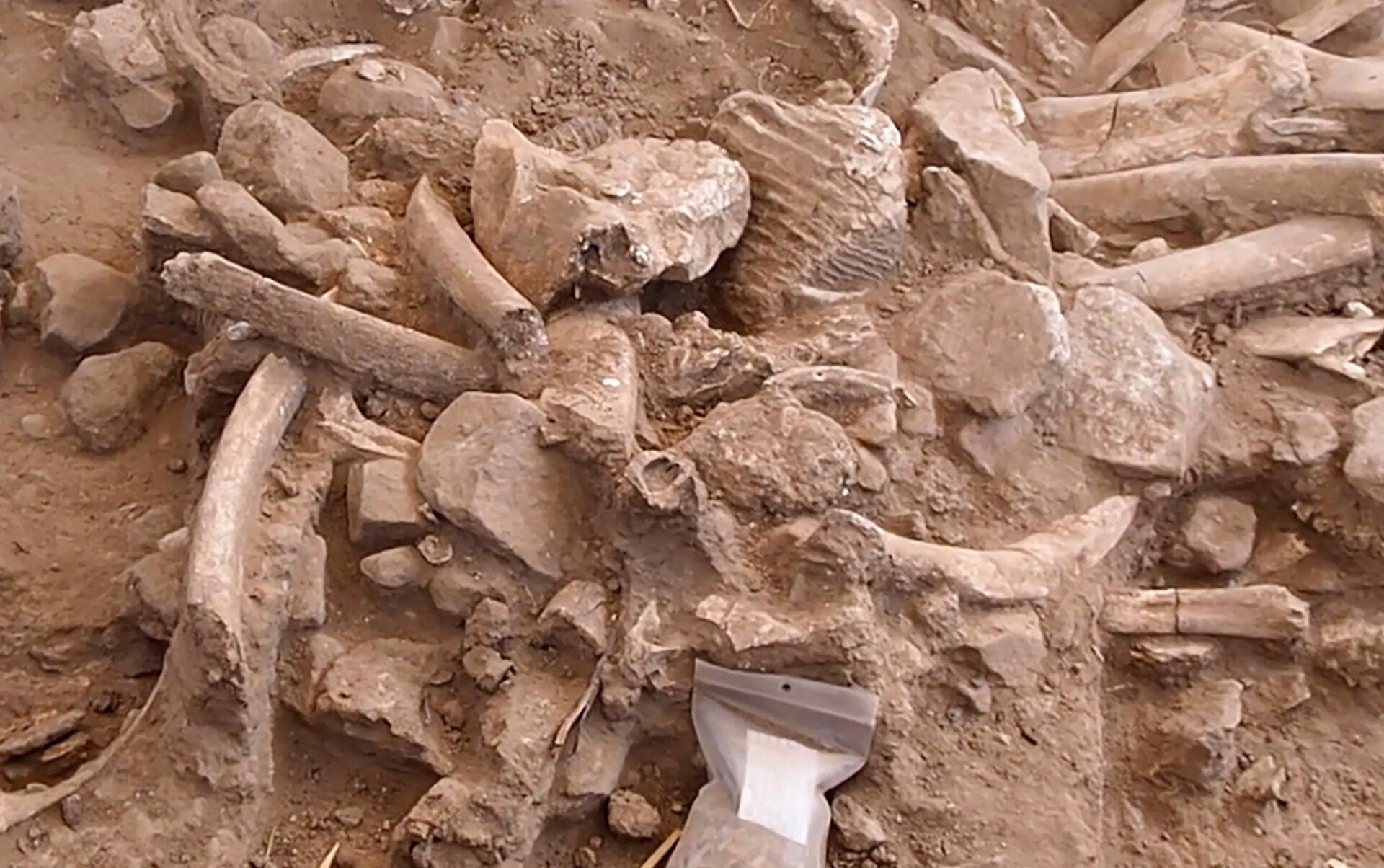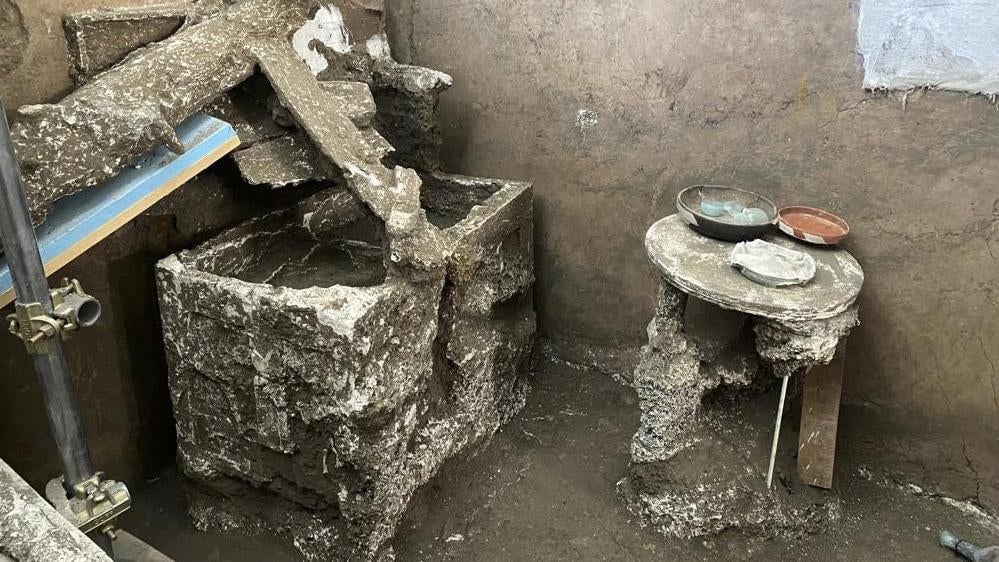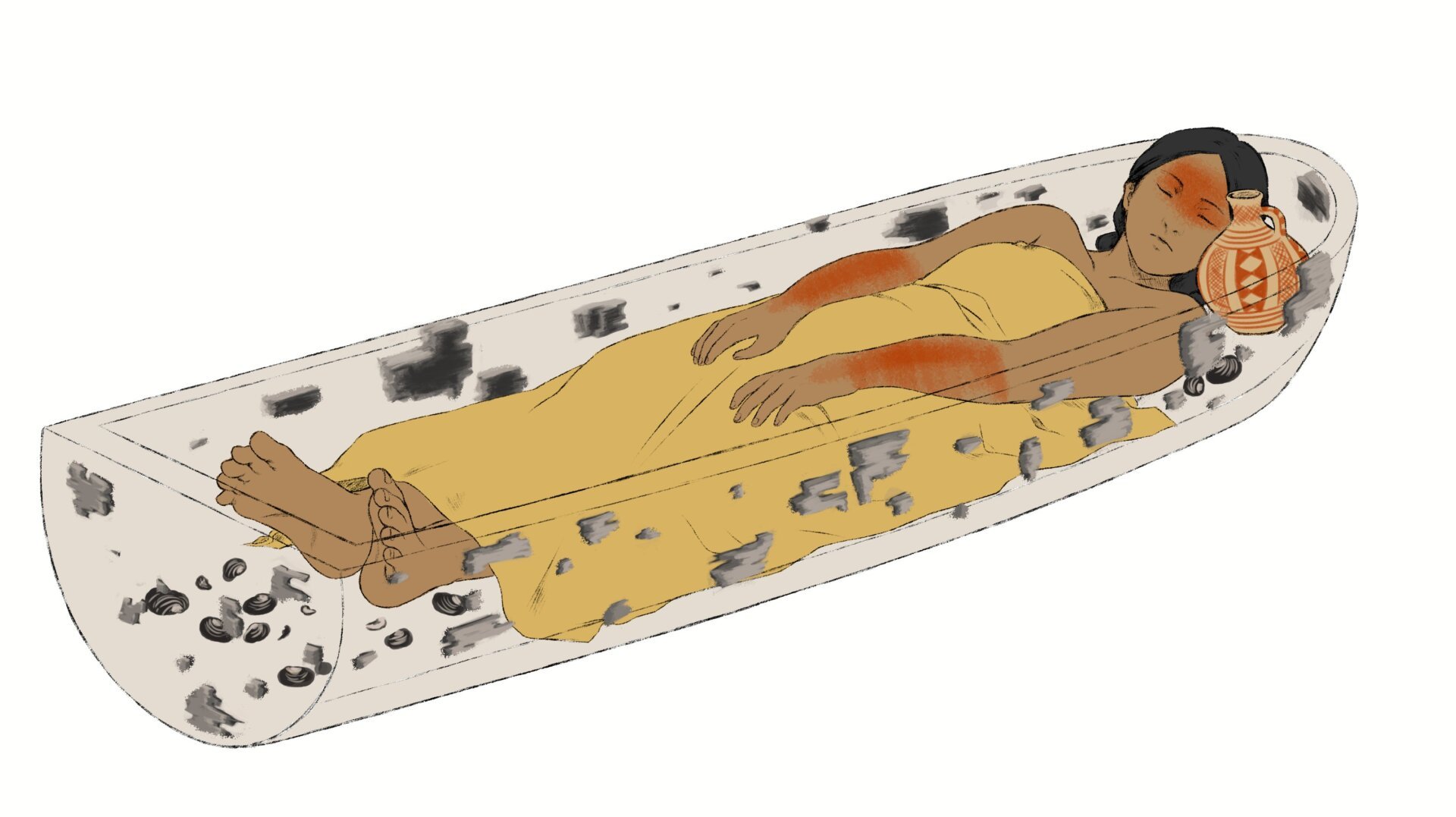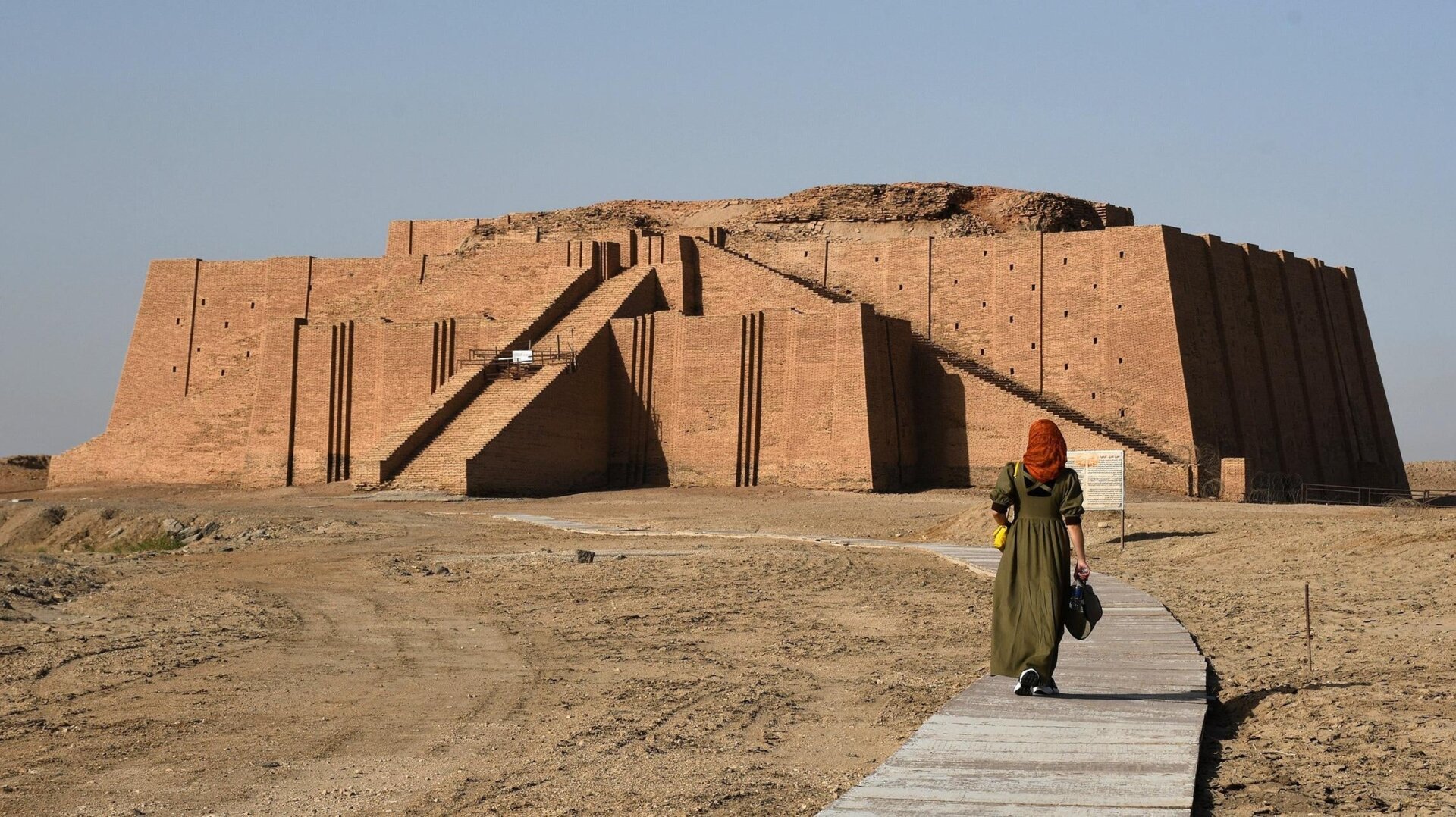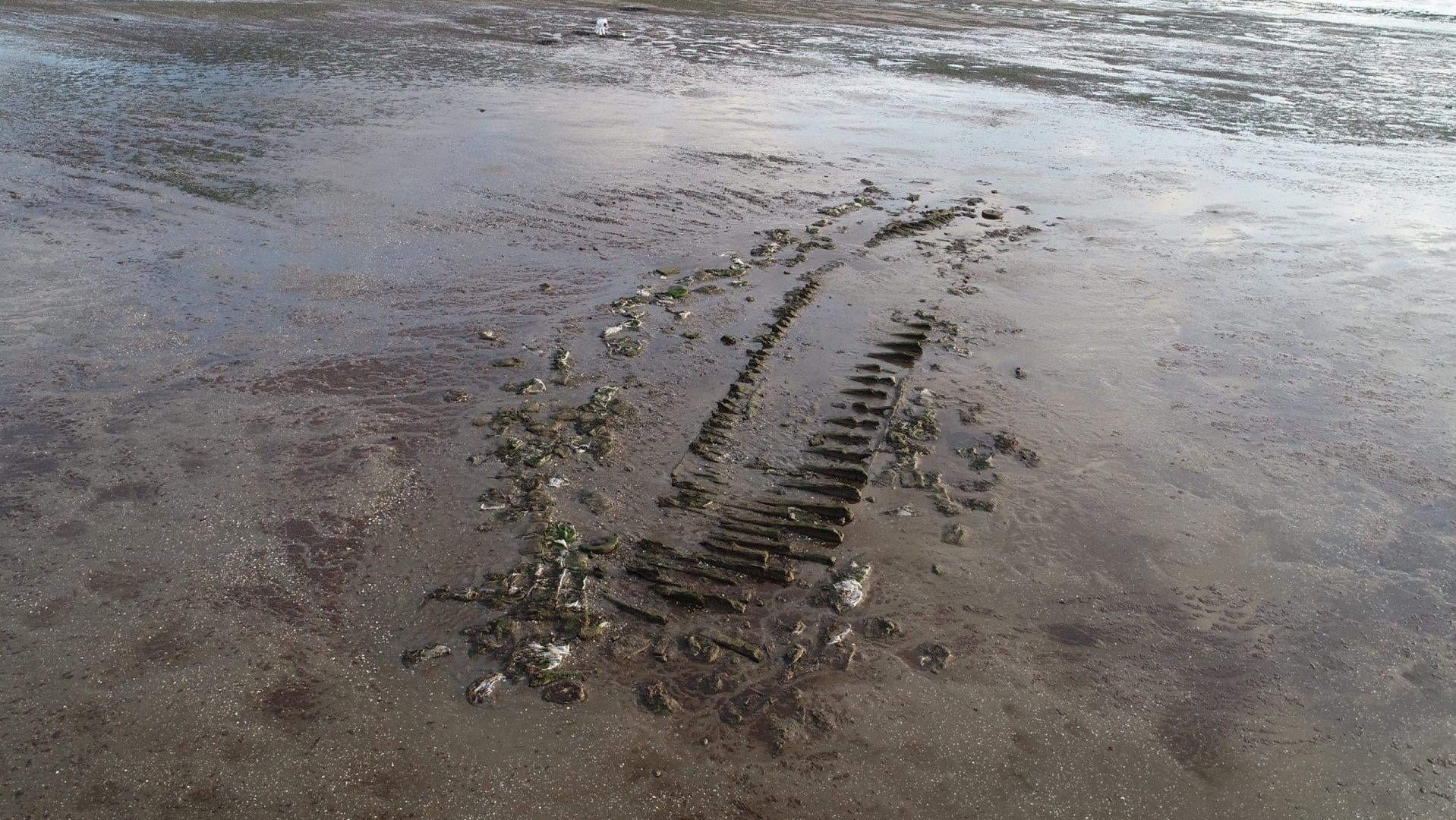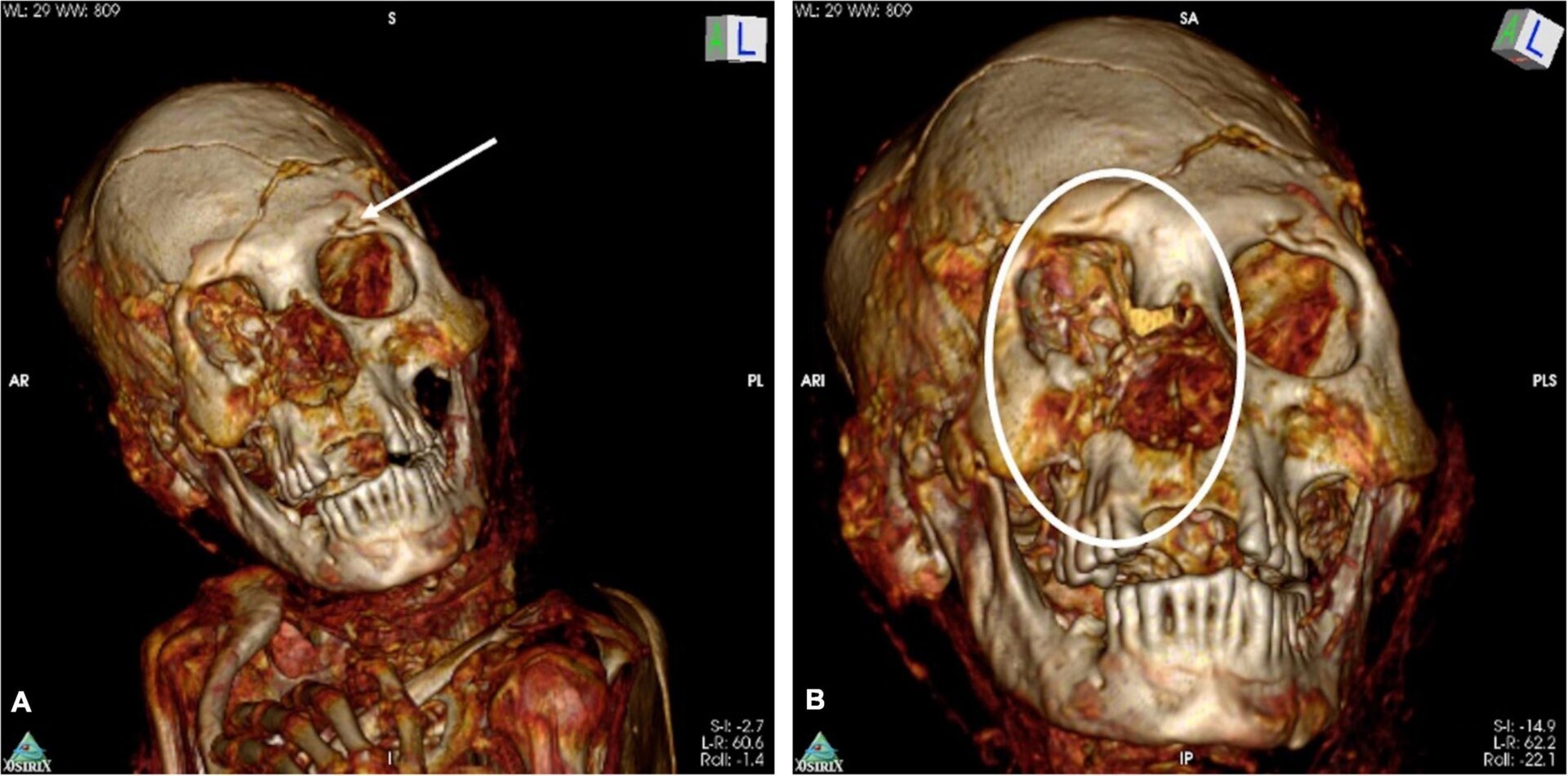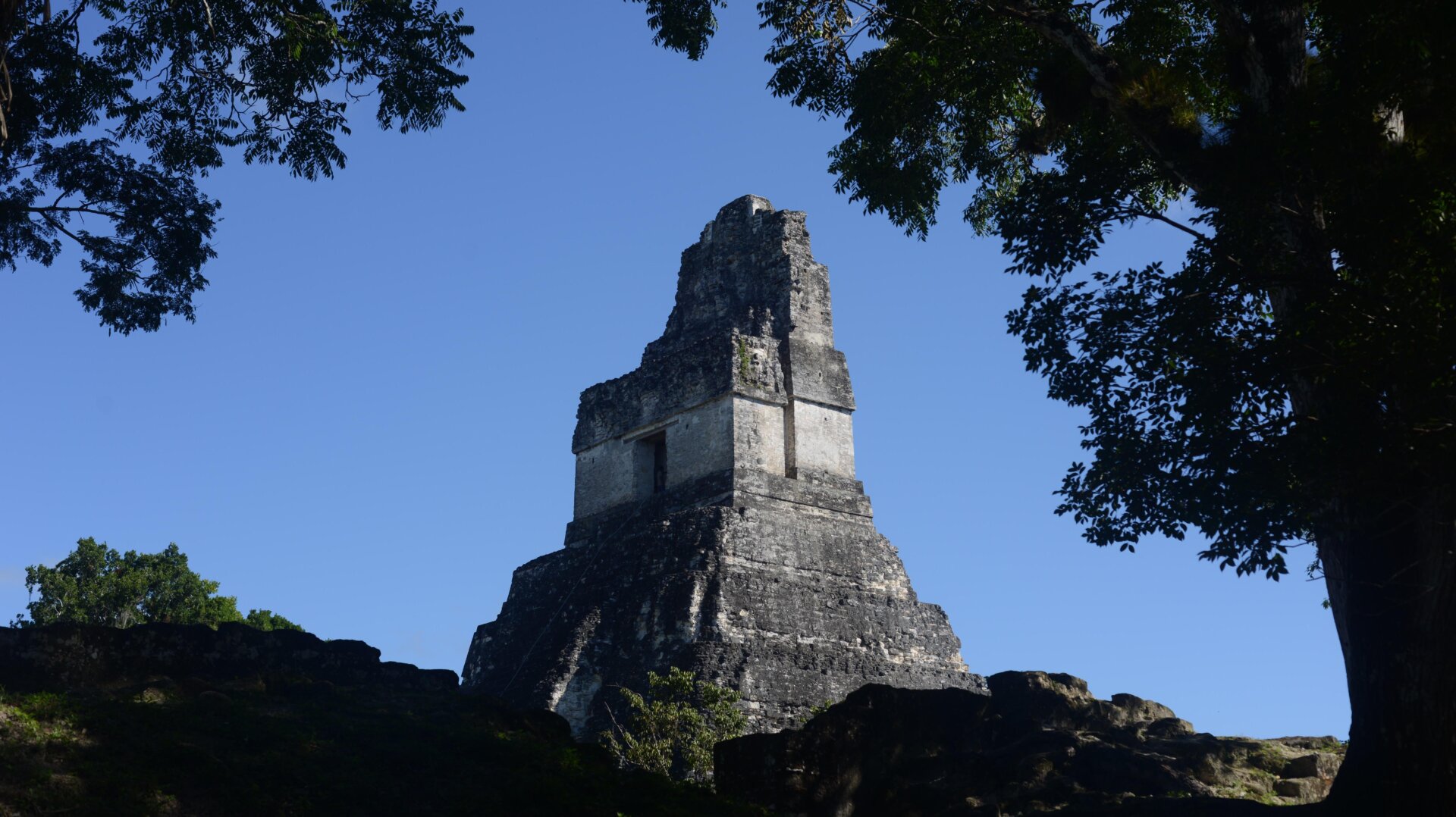Evidence of butchered mammoth bones discovered in New Mexico may reshape our understanding of when humans first arrived in the Americas. The remains, dating back 36,250 to 38,900 years ago, offer compelling clues about early human activity.
This remarkable find, detailed in a study published in Frontiers in Ecology and Evolution, centers around a seemingly unremarkable bone pile. Lead author Timothy Rowe, a paleontologist at The University of Texas at Austin, initially suspected the site to be a butchering location. However, the absence of sophisticated stone tools, a typical marker of human presence, made confirmation challenging.
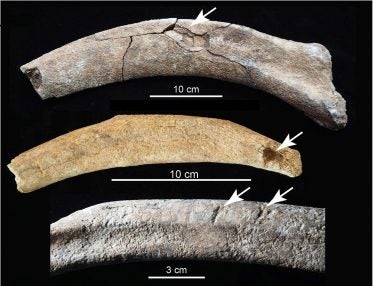 Three mammoth ribs from the site, showing (top to bottom) blunt force trauma, a puncture wound, and evidence of chopping.Mammoth rib samples exhibiting blunt force trauma, a puncture wound, and signs of chopping. (Photo: Timothy Rowe et al. / The University of Texas at Austin)
Three mammoth ribs from the site, showing (top to bottom) blunt force trauma, a puncture wound, and evidence of chopping.Mammoth rib samples exhibiting blunt force trauma, a puncture wound, and signs of chopping. (Photo: Timothy Rowe et al. / The University of Texas at Austin)
Further investigation using CT scans revealed a different story. The scans identified 32 bone flakes with distinct fractures, unlikely to have been caused by natural processes or animal scavenging. Approximately half of these flakes possessed sharp edges suitable for cutting, suggesting their use as tools.
The scans also uncovered punctures in several mammoth ribs and vertebrae, initially obscured by bone-colored sediment. These punctures, the researchers propose, may have facilitated grease extraction from the bones, a technique consistent with known butchering practices.
Adding to the evidence of human involvement, the site also yielded burned remains of smaller animals, including birds, rodents, lizards, and fish. The nearest river being 200 feet away, combined with the condition of the remains, suggests a controlled fire rather than a natural event like lightning.
If these findings are confirmed as evidence of early human activity, they would further challenge the Clovis First theory, which posited human arrival in North America around 13,000 years ago. This new evidence aligns with recent discoveries, such as fossilized human footprints in New Mexico dating back 23,000 years, and genetic studies suggesting multiple waves of human migration from Asia. The mammoth site predates these footprints by approximately 15,000 years, pushing back the timeline of human presence in North America significantly.
This discovery highlights the evolving understanding of early human migrations and settlements in the Americas. Further research and analysis will be crucial to fully interpret the significance of these findings and their implications for our understanding of human history.



